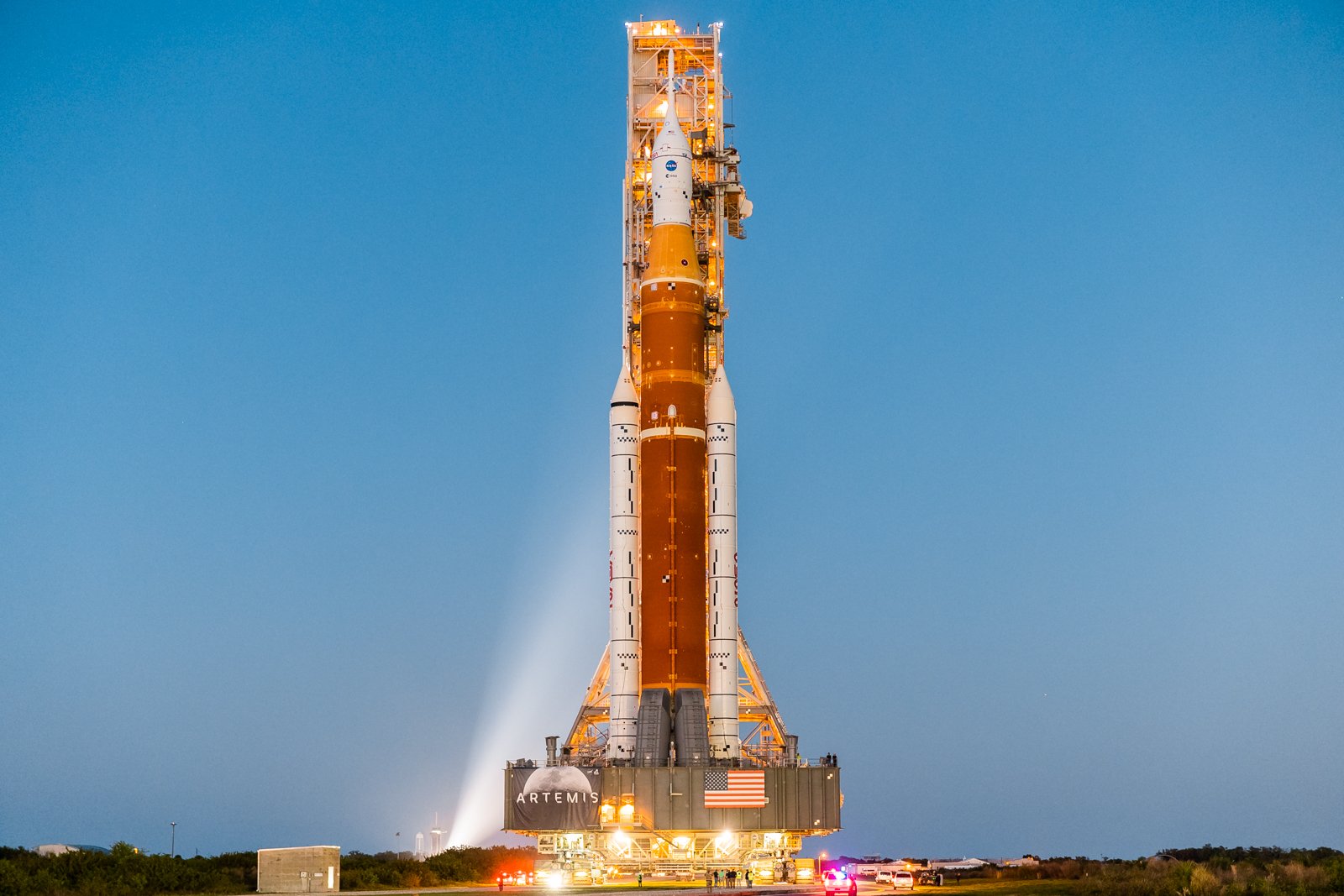NASA’s journey back to the Moon is taking a significant leap forward with the unveiling of the Space Launch System’s (SLS) Block 1B configuration. Designed to carry astronauts and cargo to the Moon, Block 1B represents a crucial upgrade over its predecessor, ensuring NASA remains at the forefront of space exploration.
Key Highlights of SLS Block 1B
- Increased Power and Capability: The introduction of the Exploration Upper Stage (EUS) enhances the SLS’s ability to send larger payloads and more astronauts to the Moon.
- Advanced Engine Design: Block 1B utilizes new-production RS-25 engines, optimized to operate at 111% of their rated power for increased efficiency and performance.
- Enhanced Payload Capacity: With the ability to launch 40% more payload to the Moon, the SLS Block 1B is a game-changer for lunar exploration and beyond.
- Critical Design Milestones Reached: The EUS has completed its Critical Design Review (CDR), marking a significant step towards construction and testing.
- Dedicated Development Efforts: A separate Block 1B/EUS Development Office has been established within NASA to focus on advancing Block 1B towards its first flight.
Deep Dive into the Evolution of SLS Block 1B
The Space Launch System’s evolution into the Block 1B configuration is a testament to NASA’s commitment to pushing the boundaries of human space exploration. With the Block 1B configuration, NASA is gearing up for more ambitious missions, including the Artemis IV mission and beyond, aiming to land the first woman and the next man on the Moon.
One of the most significant upgrades for the SLS Block 1B is the Exploration Upper Stage (EUS). This new stage is designed to provide the necessary boost to send larger cargos and more astronauts to the Moon. The EUS features larger fuel tanks and is equipped with four RL10 engines, enabling it to deliver greater payloads to lunar orbit.
The development of the EUS and the new-production RS-25 engines showcases NASA’s dedication to innovation and efficiency. The RS-25 engines, in particular, are a marvel of engineering, being fine-tuned to operate at 111% of their rated power, a notable increase from the engines used in the Block 1 configuration.
As part of the Block 1B’s development, NASA and its partners, including Boeing, are working diligently on producing structural test articles and flight hardware structures. This collaborative effort underscores the importance of the SLS Block 1B in achieving NASA’s ambitious goals for lunar exploration and beyond.
Why Block 1B Matters for Lunar Missions
The enhanced SLS Block 1B provides crucial advantages that will push the boundaries of NASA’s Artemis program and solidify the long-term presence on the Moon:
- Supporting Lunar Outposts: With the ability to carry larger modules and supplies, Block 1B makes establishing a sustained lunar base more feasible.
- Complex Payload Delivery: SLS Block 1B can transport large scientific equipment, rovers, and other heavy cargo vital for expanding our understanding of the Moon.
- Co-manifesting Secondary Payloads: The greater payload volume allows NASA to send additional science missions and experiments alongside the primary Artemis missions.
NASA’s Space Launch System Block 1B is setting the stage for a new era of lunar exploration. With its enhanced capabilities, increased payload capacity, and advanced engineering, the SLS Block 1B is poised to play a pivotal role in returning humans to the Moon and paving the way for future missions to Mars and beyond. As NASA continues to innovate and push the limits of what is possible, the SLS Block 1B stands as a symbol of humanity’s unyielding drive to explore the unknown.







